5 Key Stories: 2/12/23 – 2/19-23
With Super Bowl LVII in the rearview, all 32 NFL teams are now in offseason mode. In case you missed any of the top developments in the days following another season coming to an end, here’s a quick breakdown:
- Raiders Release Carr: A move which had long been expected finally became official this week, as the Raiders cut quarterback Derek Carr before the guarantee trigger in his contract took effect. A trade to an interested team was not an option, after the four-time Pro Bowler made it clear he would force Las Vegas to make him a free agent. Now, Carr can sign with a new team at any time (as opposed to other free agents who can only do so when the new league year begins in March). He has already met with the Saints, and most recently, the Jets. A number of other suitors are likely to show interest in him as well.
- Colts Hire Steichen As HC: The Colts conducted a lengthy, wide-ranging search for their next full-time head coach, one which included interim HC Jeff Saturday for quite some time. Not long after narrowing their list of finalists, though, they landed on Eagles offensive coordinator Shane Steichen. The 37-year-old has received glowing reviews for his previous work with quarterbacks in particular, something which will play a central part in his success in Indianapolis, a team desperate for a long-term solution under center.
- Gannon Takes Over As Cardinals’ Coach: Hours after the news broke that Steichen was headed to Indianapolis, it was learned that Eagles DC Jonathan Gannon had been hired by Arizona. That put him in place as the final HC hire of the 2023 cycle, and made the Eagles the first team in a decade to see both their offensive and defensive coordinators depart in the same offseason. Gannon, 39, emerged as a late contender for the Cardinals’ head coaching gig, and will face the tall task of rebuilding the AFC West squad alongside new general manager Monti Ossenfort and a pair of new coordinators.
- Commanders Hire Bieniemy As OC: After five straight one-year contracts tying him to Kansas City, Eric Bieniemy has landed a new coaching opportunity in Washington. While it isn’t the HC position many have been clamoring for, the 53-year-old will have his first opportunity to have full control of an offense, along with a raise and bump in title as the Commanders’ assistant head coach. The two-time Super Bowl winner inherits a far different situation than the one he left in Kansas City (from the distinct lack of an established quarterback to the uncertain future of HC Ron Rivera), but he will have the chance to guide his new team to an improved showing on offense and, in turn, boost his own stock.
- Ridley Applies For Reinstatement: On the first day he was eligible to do so, wideout Calvin Ridley applied to be reinstated to the NFL. The 28-year-old was suspended for the 2022 campaign due to a violation of the league’s gambling policy, but was still traded at the deadline from the Falcons to the Jaguars. If he is allowed to suit up in 2023, the former first-rounder will look to build off his success in Atlanta while helping Jacksonville’s new-look pass-catching corps take another step forward.
2023 Free Agent RB Class
This offseason is set to be an intriguing one in the running back market for multiple reasons. Not only are their top running backs in the league set to hit the market, but there is depth to be found throughout the position from starters to role players to backups. Here’s a quick rundown of some of the names your team may have the chance to add before the 2023 season. 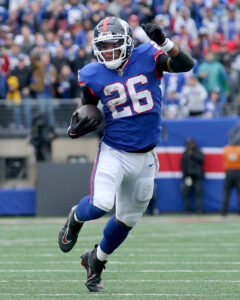
First off, there are some bona fide starters set to hit free agency this year. The Giants’ Saquon Barkley and Raiders’ Josh Jacobs are the two that mainly fall under this umbrella. Barkley had a resurgent 2022 season that saw him assert the rushing dominance that had been absent since his rookie season in 2018. Though he failed to amass the receiving numbers he held as a rookie, his Pro Bowl season should be enough to establish him as one of the best running backs available this offseason, if not the best.
[RELATED: 2023 NFL Franchise Tag Candidates]
If it’s not Barkley, Jacobs has a strong claim of his own. The fourth-year rusher out of Alabama answered the calls questioning his future in Las Vegas with a career year that saw him rush for nearly 100 yards per game. Jacobs led the league with 1,653 rushing yards adding 12 touchdowns and 400 receiving yards for good measure. These two are the cream of the running back free agency crop and there’s no doubt about it.
Next, there are a number of running backs with star power potential. They either just displayed career years that should excite teams who may want them, or they have shown such potential in the past. Cowboys running back Tony Pollard and Eagles back Miles Sanders lead this group. Pollard has truly been itching to show the NFL what he can do. He broke 1,000 yards rushing for the first time this season and has 1,726 rushing yards and 11 rushing touchdowns in the past two years, all while playing second fiddle to starter Ezekiel Elliott. Pollard routinely averages more yards per attempt than Elliott and, for the first time this year, despite having 38 fewer rush attempts, Pollard outgained Elliott by 131 yards. Pollard rightfully deserves a chance to be a lead back in the NFL. Will he get his opportunity next season? Sanders has had a bit more opportunity to establish himself as a lead back but finally succeeded this season after rushing for career highs of 1,269 rushing yards and 11 touchdowns. It’s taken him awhile to get here, but in the new offense with Hurts and other weapons, Sanders finally proved he was worth the second-round pick Philadelphia used on him in 2019. After Sanders accounted for over 70% of the team’s carries by running backs, the Eagles will have to decide just how valuable he is to the team.
Others who fall under this umbrella are the Browns’ Kareem Hunt and Lions’ Jamaal Williams. Hunt was a star in his rookie season with the Chiefs, leading the league in rushing that year with 1,327 yards. His sophomore season was as impressive until it was cut short when a video surfaced of him physically assaulting a woman. Since then, Hunt has played a competent second fiddle to Nick Chubb in Cleveland. He has failed to reach his lofty number from Kansas City but continues to be a strong addition to the offense. Heading in 2023 at 28 leaves Hunt with less and less time to regain his potential as a lead back. Williams, on the other hand, is a 28-year-old heading in the right direction. For the first time in his career, Williams was given the opportunity this season to be treated as a lead back and rewarded the Lions with a career-high 1,066 rushing yards and a league-leading 17 rushing touchdowns. Williams should certainly have earned himself a chance at another leading role somewhere next season.
This is already a ton of running back talent set to hit the market, but the depth doesn’t stop there. Seahawks running back Rashaad Penny has averaged over six yards per carry in each of the last two seasons, despite his career being hamstringed by injuries. David Montgomery has rushed for over 800 yards and five touchdowns in each of his four seasons with the Bears. Bills running back Devin Singletary showed similar production in his last two years in Buffalo. And, only a year ago, Jets running back James Robinson was considered one of the best players in Jacksonville after totaling 1,837 rushing yards and 15 rushing touchdowns over his first two years.
Former 49ers running backs Raheem Mostert, Matt Breida, Jerick McKinnon, and Jeff Wilson all have shown some success in backup roles over the years and should find opportunities in the coming seasons. Veterans in Saints running back Mark Ingram, Buccaneers running back Giovani Bernard, Ravens running back Kenyan Drake, and Broncos running back Latavius Murray should all hit the market. A number of players who have established themselves as reliable backups should be available like the Bengals’ Samaje Perine, Lions’ Justin Jackson, Broncos’ Marlon Mack, Vikings’ Alexander Mattison, Ravens’ Justice Hill and Seahawks’ Travis Homer.
Not only is the free agent pool already stacked, but it may also benefit even more from a number of talented rushers who are set to have rather large cap hits next season. While talented, Saints running back Alvin Kamara‘s recent legal troubles may make his $16.03MM cap hit next year a bit less palatable. Arizona back James Conner‘s $10.45MM cap hit and Tampa Bay back Leonard Fournette‘s $8.47MM cap hit may make them potential cap casualties, as well. Similarly, Broncos running back Chase Edmonds ($5.92MM), Ravens running back Gus Edwards ($5.63MM), Falcons running back Cordarrelle Patterson ($5.50MM), and Bills running back Nyheim Hines ($4.79MM) all hold high cap hits for their relative production.
There are many factors that affect how this offseason will play out for all these rushers. A low franchise tag amount of $10.1MM may keep backs like Pollard, Sanders, and Williams in place for another year. A tag of that amount being placed on Barkley or Jacobs should, rightfully, upset either back, who should earn north of $12MM per year. The rest of the field may be up to the whims of the market. The pure abundance of talent in the market may make it difficult for anyone to demand a high price. Another factor working against them is that many teams are adopting a draft-only policy on running backs, using the rushers for four years, then going back to the college ranks to replace them. This will likely require free agents to take lesser deals in order remain viable options in the NFL.
Starting next week, teams will have the option to apply their tags to impending free agents. March 13 will begin a negotiating period for free agents with the rest of the league before free agency officially opens two days later. The draft will follow a couple weeks after. There is plenty to keep an eye on in this year’s running back class, both in free agency and in the draft. It will be interesting to see how it all unfolds.
2023 NFL Franchise Tag Candidates
Set to begin its fourth decade of existence, the franchise tag remains a valuable tool for teams to keep top free agents off the market. This year’s tag window opens at 3pm CT on Feb. 21 and closes at 3pm CT on March 7. The NFL released its franchise tag figures — regarding the non-exclusive tag, at least, which will apply to all but one possible tag recipient — earlier this month, and teams are busy budgeting for free agency.
The legal tampering period opens March 13, with the new league year (and official free agency) starting March 15. Once a player is tagged, he has until July 15 to sign an extension with his respective team. Absent an extension agreement by that date, the player must play the 2023 season on the tag (or go the Le’Veon Bell/Dan Williams/Sean Gilbert route, passing on guaranteed money and skipping the season).
With high-profile free agents weeks away from hitting the market, here are the players who figure to be tagged or at least generate conversations about a tag ahead of the March 7 deadline.
Locks
Lamar Jackson, QB (Ravens)
One of the most obvious tag candidates since the tag’s 1993 debut, Jackson has been extension-eligible since January 2021. He and the Ravens went through negotiations in 2021 and 2022, negotiating into the season two years ago and stopping talks before Week 1 — a Jackson mandate — of last season. The self-represented quarterback has declined multiple Ravens offers in this span and failed to finish a season for the second straight year. The endless extension drama and rumblings of team frustration about Jackson’s failure to return from an ankle injury aside, the team will tag the former MVP.
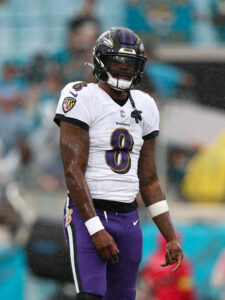 Baltimore GM Eric DeCosta said last month he had not decided on using the exclusive or non-exclusive tag — the former preventing teams from talking to the QB, the latter opening the door to offer sheets — but a recent report suggested the team is more likely to roll the dice by using the non-exclusive tag. This would allow another team to sign to Jackson, 25, to the fully guaranteed deal he covets (in a transaction that could send two first-round picks Baltimore’s way) but also hit the Ravens with just a $32.4MM cap hit.
Baltimore GM Eric DeCosta said last month he had not decided on using the exclusive or non-exclusive tag — the former preventing teams from talking to the QB, the latter opening the door to offer sheets — but a recent report suggested the team is more likely to roll the dice by using the non-exclusive tag. This would allow another team to sign to Jackson, 25, to the fully guaranteed deal he covets (in a transaction that could send two first-round picks Baltimore’s way) but also hit the Ravens with just a $32.4MM cap hit.
With the Browns collecting three first-rounders and change for Deshaun Watson, the Ravens would almost definitely want more than the two-first-rounder haul attached as baseline compensation for franchise tag offer sheets. But an exclusive QB tag is expected to check in beyond $45MM; this would severely restrict the Ravens in free agency.
The Browns’ Watson extension changed the game for the Ravens, creating a potentially unbridgeable guarantee gap. Jackson has long been connected to seeking a deal north of Watson’s $230MM fully guaranteed; the Ravens offered $133MM guaranteed at signing last year. Ravens owner Steve Bisciotti spoke out against the Browns giving Watson that money, and tag-and-trade scenarios involving the top quarterback in Ravens history have entered the equation. It will be a fascinating offseason in Baltimore, even after DeCosta and John Harbaugh expressed hope Jackson can be extended.
Likely tag recipients
Orlando Brown Jr., T (Chiefs)
Criticized by some for turning down the Chiefs’ six-year, $139MM extension offer in July 2022, Brown stayed healthy this season and earned another Pro Bowl nod. The mammoth left tackle is 2-for-2 in Pro Bowls as a Chief, and although he is not quite a top-tier blindsider, he would be one of this year’s top free agents if permitted to hit the market. The Super Bowl champions are not expected to let that happen. A second Brown tag would come in at $19.99MM, being 120% of his 2022 salary.
Brown, 26, cited insufficient guarantees in the Chiefs’ July proposal, which contained $38MM guaranteed at signing and $52.25MM guaranteed in total. The total guarantee figure trailed only ex-Ravens teammate Ronnie Stanley among tackles, while the full guarantee would have placed Brown fourth at the position. Brown turning down that proposal brought risk, and some in the Chiefs organization expressed frustration with the talented blocker. But the former Ravens right tackle’s bet on himself still appears to be paying off. This will be a crucial offseason for the Chiefs and Brown. A third tag — 144% of Brown’s 2023 salary — in 2024 would be viewed as untenable, sending him to free agency on the Kirk Cousins/Trumaine Johnson path. That makes July 15 a fairly firm deadline for Brown and the Chiefs.
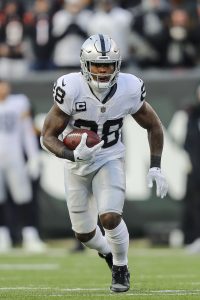 Josh Jacobs, RB (Raiders)
Josh Jacobs, RB (Raiders)
After Las Vegas’ new regime passed on Jacobs’ fifth-year option, he became the first Raider to win the rushing title since Marcus Allen in 1985. Jacobs led the NFL in touches in 2022 (393) but was never a primary ball-carrier at Alabama; the former first-round pick should still have some tread on his tires. Running back extensions have become popular but divisive in recent years. While Christian McCaffrey, Alvin Kamara and (for now) Ezekiel Elliott are attached to deals worth at least $15MM per year, the Raiders can tag Jacobs at just $10.1MM.
Jacobs, 24, has expressed a desire to stay in Nevada, and Josh McDaniels and GM Dave Ziegler want to continue this partnership as well. With many quality running backs on track for free agency, new deals could be finalized before the Raiders become serious about Jacobs negotiations. Whether that happens this year or not, the former first-round pick is unlikely to reach the market.
Daron Payne, DT (Commanders)
After early-offseason extension rumblings, the Commanders did not move too far in this direction last year. They re-upped Terry McLaurin and let Payne play out a contract year. But Payne turned 2022 into a platform campaign that stands to make him one of this year’s top free agents. The Commanders are soon to have $26MM in additional cap space, by moving on from Carson Wentz, and the team will likely give strong consideration to keeping Payne off the market. The defensive tackle tag costs $18.94MM. Washington has begun Payne talks, but those are still in the early stages.
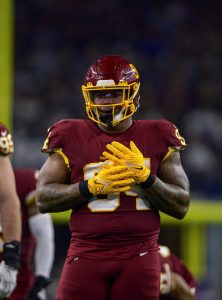 Washington has some mouths to feed on its defensive line, with both Montez Sweat and Chase Young now extension-eligible. The team already paid Payne’s Alabama and Washington D-tackle teammate, Jonathan Allen, and drafted another Crimson Tide interior rusher (Phidarian Mathis) in Round 2 last year. Mathis went down in Week 1, and Payne broke through for an 11.5-sack, 18-TFL season. A tag here is not an open-and-shut tag case, but it would be a tough blow for the Commanders to see their sack leader walk. Regrouping with Payne, 25, would make more sense, especially with the team not preparing to spend big at quarterback this offseason.
Washington has some mouths to feed on its defensive line, with both Montez Sweat and Chase Young now extension-eligible. The team already paid Payne’s Alabama and Washington D-tackle teammate, Jonathan Allen, and drafted another Crimson Tide interior rusher (Phidarian Mathis) in Round 2 last year. Mathis went down in Week 1, and Payne broke through for an 11.5-sack, 18-TFL season. A tag here is not an open-and-shut tag case, but it would be a tough blow for the Commanders to see their sack leader walk. Regrouping with Payne, 25, would make more sense, especially with the team not preparing to spend big at quarterback this offseason.
Tony Pollard, RB (Cowboys)
Seeming likelier by the week, a Pollard tag would keep an emerging playmaker with a light career workload in the fold. The Cowboys are believed to be strongly considering a tag here, even with Ezekiel Elliott‘s bloated contract on the books. Elliott taking less to stay — it would need to be a lot less — has already been floated, opening the door for his better-performing (in recent years, at least) backup to stick around on the $10.1MM number or via an extension.
It would be strange to tag a backup, but Pollard, 25, is essentially a Dallas starter. He matched Elliott with 12 touchdowns in 2022 and smashed his career-high scrimmage yards number with 1,378. Pollard’s 631 career touches rank just 24th among backs since 2019, pointing to a few prime years remaining on the horizon. With Elliott’s cap number near certain to move down from its present $16.7MM place and Pollard not at risk of seeing his fractured fibula affect his 2023 availability, the former fourth-round find should be back in Dallas.
The Giants’ decision
Daniel Jones, QB
Passing on Jones’ fifth-year option — an understandable decision, given Jones’ first three seasons — leads the Giants to one of the more interesting free agency quandaries in recent memory. After making Saquon Barkley a higher priority regarding in-season extension talks, Big Blue’s new regime has come around on Jones. The former No. 6 overall pick piloting the Giants to the divisional round for the first time in 11 years transformed his value from where it was entering the season, and GM Joe Schoen all but assured the fifth-year passer will be back with the team in 2023. Will that be on a long-term deal or via the tag?
If the Giants and Jones, 25, cannot find common ground before March 7, the tag will likely come out. The team encountered this situation with Leonard Williams in 2021 and tagged the trade acquisition for a second time. That preceded a monster extension. The Giants probably should be careful here, with two late-season matchups against a porous Vikings defense boosting Jones’ value — to the $35MM-per-year range. But the team also should be eager to see Jones in Brian Daboll‘s offense and surrounded by better pass catchers.
 Saquon Barkley, RB
Saquon Barkley, RB
A Giants team that battled injuries and bad investments at wide receiver relied on Barkley for much of 2022. Losing the two-time Pro Bowler for nothing will bring considerable risk. Jones sitting atop the Giants’ to-do list may be a pivot from the midseason point, when Schoen referenced a Barkley tag. A positional value-based course change could send Barkley to free agency.
The Giants are believed to have offered Barkley a deal in the $12.5MM-per-year neighborhood, and while the former No. 2 overall pick cited his injury history (21 missed games from 2019-21) in saying he is not looking to reset the running back market, Schoen noted the sides’ 2022 negotiation did not come close to a deal. Barkley, 25, is believed to be seeking a contract near McCaffrey’s $16MM-per-year market-setting price. A $14MM-AAV compromise could be in play, but Barkley may also be keen on testing the market.
Tagging Jones at $32.4MM would clog the Giants’ cap ahead of free agency, whereas as a Barkley tag ($10.1MM) would not drain the team’s funds on the same level. Barkley can make a case he is worthy of the McCaffrey-Kamara tier, given his production (when healthy) and versatility — and the salary cap jumping nearly $30MM (to $224.8MM) since those stars’ 2020 extensions were finalized. But the Giants are not yet prepared to go much higher than the $12MM-AAV range — the second tier for running backs. Jones talks not producing a deal would put the Giants to a decision; Barkley could become one of the most talented backs to hit free agency.
While Barkley is a better player, Jones has become the Giants’ top priority. Tagging the quarterback would be far more expensive than cuffing Barkley. A Jones extension/Barkley tag scenario remains the best Giants path, but that can only come to fruition if Jones agrees to terms before March 7.
On tag radar
Jessie Bates, S (Bengals)
With Joe Burrow now extension-eligible, new contractual territory awaits the Bengals. Tee Higgins is also eligible for a new deal, with Germaine Pratt weeks away from free agency. Vonn Bell, a three-year Bengals starter who is also nearing free agency, would be a cheaper alternative at safety to keeping Bates on a second tag. Cincinnati also drafted potential Bates heir apparent Dax Hill in the first round. This all points to the Bengals letting Bates walk — as they did defenders Carl Lawson and William Jackson in 2021 — but the former second-round pick is still one of the league’s top safeties.
The Bengals and Bates never came close on an extension last year; the team’s conservative guarantee policy led to an offer of $16MM guaranteed at signing. While player personnel director Duke Tobin said last summer renegotiations this year will not be off the table, Bates will likely hit the market. The five-year Cincinnati starter, who will turn 26 next week, can be re-tagged at $15.5MM.
Jamel Dean, CB (Buccaneers)
The Bucs tagged Chris Godwin in each of the past two years and prioritized retaining their core players above all else during that span. But, with Tom Brady‘s void-years money hitting the Bucs’ cap in 2023, a Dean tag will be difficult to pull off. The Saints moving from $75MM-plus over the cap in February 2021 to creating room for a Marcus Williams tag, however, shows how teams can go from cap hell to carving out tag space. That said, Brady’s $35.1MM hitting the cap pushes the Bucs past $50MM over the 2023 salary ceiling.
Dean, 26, has been one of the team’s top players. The former third-round pick grades as Pro Football Focus’ No. 11 overall cornerback from 2020-22. This still looks like an unlikely proposition, with the corner tag at $18.14MM, but it should not be considered completely off the table.
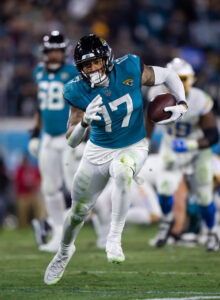 Evan Engram, TE (Jaguars)
Evan Engram, TE (Jaguars)
Tight ends Mike Gesicki, David Njoku and Dalton Schultz received tags in 2022, and the tight end tag again checking in as the third-cheapest ($11.36MM) this year makes the Jaguars keeping Engram off the market a logical step. The former Giants first-round pick broke through on his one-year Jags pact, filling a longstanding void for the franchise. Engram’s 766 receiving yards set a Jacksonville single-season tight end record. With mutual interest believed to exist, a tag as a bridge to a summer extension — ahead of Engram’s age-29 season — is a scenario to watch here.
C.J. Gardner-Johnson, S (Eagles)
The Eagles traded two Day 3 draft picks for Gardner-Johnson and moved him from corner to safety. After the ex-Saints slot defender led the NFL in interceptions, he will be in line for a payday. New Orleans and Gardner-Johnson, 25, could not come to terms last summer, leading to the trade, but Philadelphia wants to retain the imported DB. The Bengals kept Bates off the market last year with the safety tag, which checks in at $14.46MM this year. Given the volume of defenders the NFC champions have set for free agency, this looks like a longer-odds scenario.
Dre’Mont Jones, DL (Broncos)
Jones’ statistical production would not be in line with a tag. The talented defensive lineman has yet to surpass 6.5 sacks or 11 quarterback hits in a season, but the former third-round pick has offered consistency and earned praise from the front office. Following the Broncos’ decision to trade Bradley Chubb, GM George Paton identified Jones as a player the team wanted to keep. The advanced metrics also view Jones fondly; Pro Football Focus charts the former third-round pick in the top 20 for pressures since 2019. Jones is believed to be a higher priority compared to guard Dalton Risner, a fellow Denver free agent-to-be.
Sean Payton‘s team using a $19MM tag on a non-Pro Bowler would be risky during an offseason in which the draft capital-poor team — thanks to the Payton trade requiring a 2023 first-round pick — faces a key free agency stretch. Jones, 26, sticking around should also depend on whom the Broncos hire as defensive coordinator.
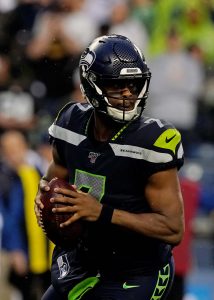 Jordan Poyer, S (Bills)
Jordan Poyer, S (Bills)
Buffalo defensive stalwarts Poyer and Tremaine Edmunds are ticketed for free agency, but with the NFL still grouping rush- and non-rush linebackers together under its tag formula, Edmunds is not a realistic tag candidate. The linebacker tag ($20.9MM) trails only the QB price. Poyer, 31, is coming off his first Pro Bowl season and has been one of the Bills’ steadiest players in the Sean McDermott era. Signed during McDermott’s first offseason, Poyer has inked two Bills contracts. He angled for a third, eventually agreeing to an incentive package, and became indispensable during a season in which the Bills lost Micah Hyde to a September neck injury and saw Damar Hamlin face one of the scariest health issues in NFL history in January.
Hamlin aims to return, while Hyde is under contract. But a Bills defense that has seen inconsistency at corner for years could still use Poyer. If the parties cannot strike a deal before March 7, the $14.5MM safety tag may not be too steep here. That said, the Bills may try to avoid a tag and save some free agency dough for Edmunds.
Geno Smith, QB (Seahawks)
A $32.4MM quarterback tag does sound too steep for Smith, his Comeback Player of the Year award notwithstanding. The Seahawks traded Russell Wilson on March 8, 2022; they re-signed Smith to a one-year, $3.5MM deal on April 14. That low-cost, incentive-laden accord effectively illustrated the NFL’s view of the former second-rounder. While Smith’s stunning season upped his value tremendously, it still seems unlikely the franchise tag will come into play. A transition tag — worth $29.5MM and involving no draft compensation — would be a more logical move.
But the top tag has been floated as a Smith-Seattle scenario. The sides have begun negotiations, and Smith’s camp figures to factor the tag salaries into the talks. This process still feels like it will end in a Smith medium-term deal. But after a 30-touchdown pass season that also included an NFL-high 69.8% completion rate, the 32-year-old passer setting a high price as the tag deadline nears would force the team to consider cuffing its starter.
2023 NFL Head Coaching Search Tracker
Last year, 10 NFL teams hired new head coaches. Following the Panthers, Broncos and Texans’ hires, this year’s vacancy count sits at two. Last year’s Saints and Buccaneers moves, however, showed these job openings can emerge at unexpected points.
Listed below are the head coaching candidates that have been linked to each of the teams with vacancies, along with their current status. If other teams decide to make head coaching changes, they’ll be added to this list. Here is the current breakdown:
Updated 2-14-23 (1:30pm CT)
Arizona Cardinals
- Lou Anarumo, defensive coordinator (Bengals): Conducted second interview 2/10
- Brian Callahan, offensive coordinator (Bengals): Interviewed 2/2; out of running
- Ejiro Evero, defensive coordinator (Broncos): Interviewed; potential finalist; hired as Panthers DC
- Brian Flores, linebackers coach (Steelers): Favorite?; second interview cancelled
- Jonathan Gannon, defensive coordinator (Eagles): Hired
- Aaron Glenn, defensive coordinator (Lions): Interviewed 1/21; potential finalist; out of running
- Vance Joseph, defensive coordinator (Cardinals): Interviewed 1/18; out of running
- Mike Kafka, offensive coordinator (Giants): Conducted second interview 2/7; likely out of mix
- Dan Quinn, defensive coordinator (Cowboys): Conducted second interview 1/25; to stay with Cowboys
- Sean Payton, former head coach (Saints): Interviewed 1/26
- Frank Reich, former head coach (Colts): Interviewed 1/17
- DeMeco Ryans, defensive coordinator (49ers): Interview cancelled, prefers Texans’ job
Carolina Panthers
- Jim Caldwell, former head coach (Lions): Interviewed
- Ejiro Evero, defensive coordinator (Broncos): Interviewed 1/18
- Ken Dorsey, offensive coordinator (Bills): Interviewed 1/21
- Jim Harbaugh, head coach (Michigan): To remain at Michigan
- Ben Johnson, offensive coordinator (Lions): In lead for job?; plans to stay with Lions
- Mike Kafka, offensive coordinator (Giants): Interviewed 1/22
- Jerod Mayo, inside linebackers coach (Patriots): Interview declined
- Kellen Moore, offensive coordinator (Cowboys): Interviewed 1/24-1/25
- Sean Payton, former head coach (Saints): Interviewed 1/23
- Frank Reich, former head coach (Colts): Hired
- DeMeco Ryans, defensive coordinator (49ers): Interview postponed
- Shane Steichen, offensive coordinator (Eagles): Interviewed 1/14
- Steve Wilks, interim head coach (Panthers): Conducted second interview 1/25
Denver Broncos
- Jim Caldwell, former head coach (Lions): Interviewed 1/11
- Brian Callahan, offensive coordinator (Bengals): Potential candidate?
- Ejiro Evero, defensive coordinator (Broncos): Interviewed 1/10
- Jonathan Gannon, defensive coordinator (Eagles): Potential candidate?
- Jim Harbaugh, head coach (Michigan): Interviewed 1/9; to remain at Michigan; still in play?
- Mike Kafka, offensive coordinator (Giants): Potential candidate?
- Raheem Morris, defensive coordinator (Rams): Interviewed 1/17
- Dan Quinn, defensive coordinator (Cowboys): Interviewed 1/20; to stay with Cowboys
- Frank Reich, former head coach (Colts): Mentioned as candidate; team moving in different direction
- Jerry Rosburg, interim head coach/senior assistant (Broncos): No longer considered for job
- DeMeco Ryans, defensive coordinator (49ers): Interviewed 1/19; frontrunner?; prefers Texans’ job
- Sean Payton, former head coach (Saints): Hired; Saints to receive first-, second-round picks
- David Shaw, former head coach (Stanford): Interviewed 1/11
Houston Texans
- Thomas Brown, tight ends coach (Rams): Interviewed 1/17
- Ejiro Evero, defensive coordinator (Broncos): Conducted second interview 1/25
- Jonathan Gannon, defensive coordinator (Eagles): Early frontrunner?; interviewed 1/14
- Ben Johnson, offensive coordinator (Lions): Interviewed 1/12; plans to stay with Lions
- Mike Kafka, offensive coordinator (Giants): Conducted second interview 1/25
- Sean Payton, former head coach (Saints): Interviewed 1/16
- DeMeco Ryans, defensive coordinator (49ers): Hired
- Shane Steichen, offensive coordinator (Eagles): Interviewed 1/13
Indianapolis Colts
- Eric Bieniemy, offensive coordinator (Chiefs): Interviewed 1/12; in finalist mix?
- Rich Bisaccia, special teams coordinator (Packers): Completed second interview
- Brian Callahan, offensive coordinator (Bengals): Conducted second interview 2/1; no longer in running
- Ejiro Evero, defensive coordinator (Broncos): Conducted second interview 1/26; hired as Panthers DC
- Aaron Glenn, defensive coordinator (Lions): Completed second interview 2/2
- Jim Harbaugh, head coach (Michigan): Mentioned as candidate, to remain at Michigan
- Ben Johnson, offensive coordinator (Lions): Interviewed 1/13; plans to stay with Lions
- Mike Kafka, offensive coordinator (Giants): Interviewed 1/22
- Don Martindale, defensive coordinator (Giants): Conducted second interview; no longer in running
- Raheem Morris, defensive coordinator (Rams): Conducted second interview 1/27
- Dan Quinn, defensive coordinator (Cowboys): Second interview scheduled for 1/28; to stay with Cowboys
- DeMeco Ryans, defensive coordinator (49ers): Interview on hold; Colts still wanted to meet
- Jeff Saturday, interim head coach (Colts): Conducted second interview 1/25; hire unlikely?; out of running
- Shane Steichen, offensive coordinator (Eagles): Hired
- Bubba Ventrone, special teams coordinator (Colts): Interviewed 1/11; in finalist mix?
Quarterbacks Traded For Day 1 Or Day 2 Picks Since 2000
The 2020s have featured more quarterback movement compared to the 2010s, and a number of QB trades involving early-round picks have commenced. Excluding trade-up or trade-down maneuvers during the draft — which shifted from a two-day event to a three-day process in 2010 — here are the 21st century’s trades for quarterbacks involving first-, second- or third-round picks.
2025
- Raiders land Geno Smith from Seahawks for 2025 third-round pick
2024
- Seahawks acquire Sam Howell, 2024 fourth-, sixth-round picks from Commanders for 2024 third-, fifth-rounders
- Eagles obtain Kenny Pickett, No. 120 from Steelers for No. 98, two 2025 seventh-round picks
2023
- Jets acquire Aaron Rodgers, Nos. 15, 170 overall from Packers for Nos. 13, 42, 207, 2024 second-round pick (No. 41)
2022
- Colts trade 2022 third-round pick to Falcons for Matt Ryan
- Browns trade three first-round picks, 2023 third-rounder, along with 2022, ’24 fourths to Texans for Deshaun Watson, 2024 sixth
- Commanders send third-round picks in 2022 and 2023 to Colts for Carson Wentz, 2022 seventh-rounder; teams swap 2022 second-round selections
- Broncos send two first-round picks, two second-rounders, 2022 fifth, TE Noah Fant, DL Shelby Harris and QB Drew Lock to Seahawks for Russell Wilson
2021
- Panthers acquire Sam Darnold from Jets for 2022 second-, fourth-round picks, along with 2021 sixth-rounder
- Eagles deal Carson Wentz to Colts for 2021 third-round pick, 2022 first-round choice
- Rams send Lions 2022, 2023 first-round picks, 2021 third-rounder and Jared Goff for Matthew Stafford
2019
- Dolphins obtain Josh Rosen from Cardinals for 2019 second-round pick, 2020 fifth-rounder
2018
- Saints acquire Teddy Bridgewater, 2019 sixth-round pick from Jets for 2019 third-rounder
- Washington lands Alex Smith from Chiefs for CB Kendall Fuller, 2018 third-rounder
- Browns send Bills 2018 third-rounder for Tyrod Taylor
2017
- Patriots acquire 2018 second-round pick from 49ers for Jimmy Garoppolo
- Browns obtain 2018 second-round pick, 2017 sixth-round choice and Brock Osweiler from Texans for 2017 fourth-rounder
2016
- Vikings acquire Sam Bradford from Eagles for 2017 first-round pick, 2018 fourth-round choice
2015
- Eagles acquire Bradford, 2016 second-round pick, 2015 fourth-rounder from Rams for Nick Foles, 2015 fifth
2013
- Chiefs land Alex Smith from 49ers for 2013 and 2014 second-round selections
2011
- Raiders obtain Carson Palmer from Bengals for 2012 first-round pick, 2013 second-rounder
- Eagles send Kevin Kolb to Cardinals for 2012 second-round pick, CB Dominique Rodgers-Cromartie
2010
- Washington acquires Donovan McNabb from Eagles for 2010 second-, fourth-round picks
2009
- Bears acquire Jay Cutler, 2009 fifth-round pick from Broncos for 2009, 2010 first-rounders, 2009 third and Kyle Orton
- In tag-and-trade transaction, Chiefs land Matt Cassel, LB Mike Vrabel from Patriots for 2009 second-round pick
2008
- Jets obtain Brett Favre from Packers for 2009 third-round pick
2007
- Texans add Matt Schaub, 2007 first-round pick from Falcons for 2007 first-rounder, along with 2007, 2008 second-round choices
2006
- Dolphins land Daunte Culpepper from Vikings for 2006 second-round choice
2004
- Texans add Drew Henson from Cowboys for 2005 third-round pick
- Dolphins acquire A.J. Feeley from Eagles for 2004 second-round pick
- Washington obtains Mark Brunell from Jaguars for 2004 third-round pick
2002
- Bills obtain Drew Bledsoe from Patriots for 2003 first-round pick
2001
- Chiefs acquire Trent Green, 2001 fifth-round pick from Rams for 2001 first-rounder
- Seahawks add Matt Hasselbeck, 2001 first-round pick from Packers for 2001 first-, third-round picks
Since 2010, Foles, Trey Lance, Joe Flacco, Ryan Tannehill, Tim Tebow and Jason Campbell have also been dealt in trades involving fourth-round picks.
Injured Reserve Return Tracker
After two years of giving teams free rein on injured reserve transactions, the NFL reinstated limitations this offseason. Teams can now activate up to eight players from injured reserve. That has reintroduced some strategy into how franchises are proceeding with their activations.
Players who were carried over to 53-man rosters after cutdown day must reside on their respective injured list for at least four weeks. Once a team designates a player for return, meaning the player returns to practice, the activation clock starts. Teams have 21 days from those return-to-practice points to activate that player. If no activation commences in that window, the player reverts to season-ending IR.
Here is how the Chiefs and Eagles’ IR situations stack up for Super Bowl LVII:
Kansas City Chiefs
Activated:
Activations remaining: 3
Philadelphia Eagles
Eligible for activation:
Reverted to season-ending IR:
- OL Brett Toth
Activated:
Activations remaining: 0
Poll: Who Will Win Super Bowl LVII?
Just one week remains until a new champion is crowned in the NFL. Super Bowl LVII will see each conference’s top seed square off against one another for the first time since 2017, and the 13th overall since seeding began in 1975.
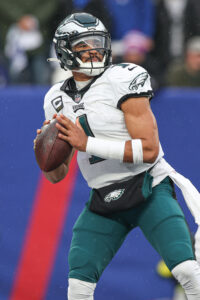 That most recent occasion saw the Eagles win their only Super Bowl to date. A far different coaching staff and roster has led the team back to the title game, culminating a regular season which saw them establish themselves as arguably the most balanced team in the league on both sides of the ball. Numerous moves made in the offseason – including the acquisition of wideout A.J. Brown – helped the Eagles take a considerable step forward on offense, with third-year quarterback Jalen Hurts putting himself in the MVP conversation.
That most recent occasion saw the Eagles win their only Super Bowl to date. A far different coaching staff and roster has led the team back to the title game, culminating a regular season which saw them establish themselves as arguably the most balanced team in the league on both sides of the ball. Numerous moves made in the offseason – including the acquisition of wideout A.J. Brown – helped the Eagles take a considerable step forward on offense, with third-year quarterback Jalen Hurts putting himself in the MVP conversation.
With the former second-rounder back at full strength, Philadelphia has had little issue in the postseason to date, securing comfortable victories over the Giants and 49ers. The latter was hamstrung by not having a healthy quarterback for much of the conference championship game, but that contest still highlighted the Eagles’ depth and their penchant for blowout wins. They enter the Super Bowl as slight favorites.
The Chiefs, however, have plenty of recent experience on the big stage. Kansas City has hosted each of the past five AFC championship games, including their win this past Sunday against the Bengals. That contest was won by the narrowest of margins, a stark contrast to the Eagles’ path through the NFC. Nevertheless, the Chiefs are now set to compete in their third Super Bowl in the past four years, as the legacy of their current era with head coach Andy Reid and quarterback Patrick Mahomes continues to grow.
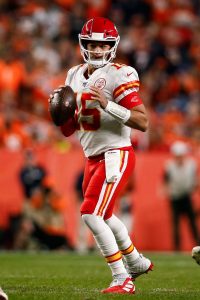 Kansas City comfortably won what was expected to be a hyper-competitive AFC West during the regular season, continuing their dominance of that division. The Chiefs were able to secure the No. 1 seed in large part due to their elite offensive production, something which many raised questions about following the departure of Tyreek Hill. Despite not having the All-Pro receiver available, Kansas City led the league in passing yards in 2022, making Mahomes the favorite to win a second MVP award. The team’s offense has plenty of potential even with the latter dealing with an ankle sprain.
Kansas City comfortably won what was expected to be a hyper-competitive AFC West during the regular season, continuing their dominance of that division. The Chiefs were able to secure the No. 1 seed in large part due to their elite offensive production, something which many raised questions about following the departure of Tyreek Hill. Despite not having the All-Pro receiver available, Kansas City led the league in passing yards in 2022, making Mahomes the favorite to win a second MVP award. The team’s offense has plenty of potential even with the latter dealing with an ankle sprain.
A number of storylines have been discussed in the build-up to the big game, including Reid facing his former team and a pair of brothers (Chiefs tight end Travis Kelce and Eagles center Jason Kelce) squaring off against one another. These two teams had the highest-scoring offenses in the league this season – and have even put up identical point totals to date, mirroring their shared 16-3 records – so their matchup has plenty of potential with respect to points being scored.
As the countdown to Super Bowl LVII continues, who do you see winning it all? Vote in the poll below and have your say in the comments section:
Poll: Who Will Become Next Colts HC?
Five years after their Josh McDaniels-to-Frank Reich pivot, the Colts are again conducting a rather interesting head coaching search. This process may well produce an unusual stage.
Indianapolis potentially planning a third round on HC interviews, after holding 12-hour meetings — in some cases — with candidates during the second round, adds a memorable wrinkle to its search to replace Reich. A third round of a coaching search has not happened in at least 40 years, Joel Erickson of the Indianapolis Star notes. GM Chris Ballard has run the search, but Jim Irsay will make the call. Where will this search end up?
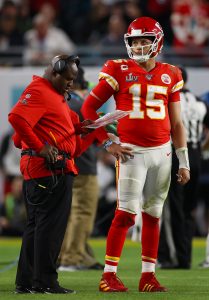 Almost everyone involved in this Indy journey has been mentioned as a finalist or scheduled a second interview. Dan Quinn hopped off the ride midway through, doing so hours after he scheduled a second meeting about the position. Ben Johnson backed out after his virtual interview, staying with the Lions. Giants OC Mike Kafka also has not been mentioned as being summoned for a second meeting. DeMeco Ryans cancelled his virtual interview and chose the Texans over the Broncos. Jim Harbaugh was mentioned as a candidate in December, but the ex-Colts QB did not interview. Otherwise, this search remains one of the most wide open in memory.
Almost everyone involved in this Indy journey has been mentioned as a finalist or scheduled a second interview. Dan Quinn hopped off the ride midway through, doing so hours after he scheduled a second meeting about the position. Ben Johnson backed out after his virtual interview, staying with the Lions. Giants OC Mike Kafka also has not been mentioned as being summoned for a second meeting. DeMeco Ryans cancelled his virtual interview and chose the Texans over the Broncos. Jim Harbaugh was mentioned as a candidate in December, but the ex-Colts QB did not interview. Otherwise, this search remains one of the most wide open in memory.
Rich Bisaccia, Brian Callahan, Ejiro Evero, Aaron Glenn, Don Martindale, Raheem Morris, Jeff Saturday and Shane Steichen have either gone through a second interview or will do so soon. Eric Bieniemy and Colts special teams coordinator Bubba Ventrone have also been mentioned as potential finalists, though neither is believed to have scheduled a second meeting.
This search has produced the rare mix of all three phases, with Bisaccia and Ventrone representing the special teams wing. Ventrone, 40, was Reich’s ST coordinator throughout the latter’s HC tenure, while Bisaccia, 62, is the rare interim HC to have guided his team to the playoffs. The Raiders passed on Bisaccia, leading him to Green Bay. Could he join John Harbaugh as a former ST coordinator to become a head coach?
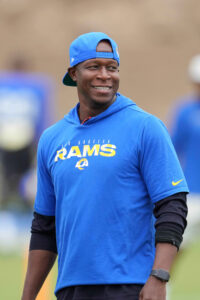 Irsay went offense twice in 2018, hiring McDaniels and then Reich. This year’s lot of OCs in contention includes Andy Reid‘s right-hand man. Ballard and Bieniemy worked together in Kansas City for four years, and since Ballard left for Indiana, Bieniemy has become Reid’s top lieutenant. Of course, that has famously not led to a head coaching opportunity. Both Doug Pederson and Matt Nagy earned HC chances as Reid’s HC, but teams have paused on Bieniemy, 53. After this latest Chiefs attack led the NFL in offensive DVOA despite trading Tyreek Hill, will the Colts be the team that goes with the oft-bypassed candidate?
Irsay went offense twice in 2018, hiring McDaniels and then Reich. This year’s lot of OCs in contention includes Andy Reid‘s right-hand man. Ballard and Bieniemy worked together in Kansas City for four years, and since Ballard left for Indiana, Bieniemy has become Reid’s top lieutenant. Of course, that has famously not led to a head coaching opportunity. Both Doug Pederson and Matt Nagy earned HC chances as Reid’s HC, but teams have paused on Bieniemy, 53. After this latest Chiefs attack led the NFL in offensive DVOA despite trading Tyreek Hill, will the Colts be the team that goes with the oft-bypassed candidate?
Callahan and Steichen are the only other offense-based candidates linked to having paths to the job. Steichen is just 37 and worked with Reich during the future Colts leader’s time as Chargers OC. Ex-Reich lieutenant Nick Sirianni gave Steichen the play-calling reins midway through last season, and it made a major difference in the Eagles’ trajectory. Philadelphia led the NFL in rushing in 2021 and has produced a top-three attack this year, as Jalen Hurts has made considerable strides as a passer. Callahan, 38, does not call plays in Cincinnati but is a candidate for both the Colts and Cardinals’ HC gigs. Joe Burrow is primed to book one of Zac Taylor‘s assistants a promotion, and Callahan is this year’s candidate.
Evero, 42, leads the league in connections to jobs during this year’s cycle, being summoned by all five HC-seeking teams for interviews and being pursued for DC gigs. It appears the Broncos’ DC will land on his feet, despite Nathaniel Hackett‘s one-and-done, and Denver remains interested in keeping him. The Rams also have Evero in mind as a Morris contingency plan. Morris, 46, would be a second-chance HC, but the ex-Buccaneers leader’s first chance came more than 10 years ago. He has rebuilt his stock in Los Angeles, helping the Rams to a Super Bowl LVI win, and Sean McVay staffers are quite popular on coaching carousels. Morris also has a near-three-month run as an interim leader under his belt, having replaced Quinn with the 2020 Falcons.
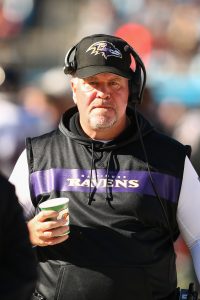 Martindale, 59 is believed to have interviewed well in his second meeting (the Irsay stage), and he played a key role in the Giants making a surprising surge to the divisional round. He coached the Ravens to three top-five defensive finishes in four DC seasons. Glenn, 50, started late in coaching due to his playing career spanning 16 seasons. The ex-cornerback joins Evero and Callahan as Cards candidates.
Martindale, 59 is believed to have interviewed well in his second meeting (the Irsay stage), and he played a key role in the Giants making a surprising surge to the divisional round. He coached the Ravens to three top-five defensive finishes in four DC seasons. Glenn, 50, started late in coaching due to his playing career spanning 16 seasons. The ex-cornerback joins Evero and Callahan as Cards candidates.
Saturday, of course, is the main variable here. Irsay stunned the NFL by hiring the former Pro Bowl center as his interim coach, pulling him off various ESPN sets and onto the sideline. Saturday, 47, won his first game but oversaw a brutal stretch in the weeks that followed. The Colts lost their final seven games and blew an NFL-record 33-point lead during that stretch. While Irsay’s unorthodox choice appeared to backfire, the owner bypassed advice against hiring Saturday in November and is believed to be receiving similar counsel now. Will the Irsay-Saturday partnership somehow continue? The 1-7 record aside, he has consistently been mentioned as a live candidate. With the Panthers passing on Steve Wilks, no interim HC has been promoted in six years.
Vote in PFR’s latest poll and weigh in with your thoughts on this situation in the comments section.
2023 NFL Cap Space, By Team
Earlier this week, the NFL revealed its 2023 salary cap. Teams can now budget for their offseasons, knowing a $224.8MM ceiling is in place. This year’s nonexclusive franchise and transition tag numbers also emerged, giving teams more clarity on those fronts as well. With that in mind, here is where every team stands in terms of cap space:
- Chicago Bears: $90.91MM
- Atlanta Falcons: $56.42MM
- New York Giants: $44.28MM
- Houston Texans: $37.56MM
- Cincinnati Bengals: $35.55MM
- New England Patriots: $32.71MM
- Seattle Seahawks: $31.04MM
- Baltimore Ravens: $26.87MM
- Las Vegas Raiders: $19.78MM
- Arizona Cardinals: $14.47MM
- Kansas City Chiefs: $13.96MM
- Detroit Lions: $13.83MM
- Indianapolis Colts: $12.59MM
- Denver Broncos: $9.07MM
- San Francisco 49ers: $8.28MM
- Washington Commanders: $8.24MM
- Philadelphia Eagles: $4.24MM
- Pittsburgh Steelers: $1.03MM
- New York Jets: $1.31MM over the cap
- Dallas Cowboys: $7.18MM over
- Carolina Panthers: $8.94MM over
- Los Angeles Rams: $14.19MM over
- Cleveland Browns: $14.64MM over
- Miami Dolphins: $16.45MM over
- Green Bay Packers: $16.48MM over
- Buffalo Bills: $17.88MM over
- Los Angeles Chargers: $20.38MM over
- Jacksonville Jaguars: $22.35MM over
- Minnesota Vikings: $23.43MM over
- Tennessee Titans: $23.67MM over
- Tampa Bay Buccaneers: $55.03MM over
- New Orleans Saints: $60.47MM over
These figures (courtesy of OverTheCap) will change dramatically in the coming weeks, but this is where each team stands ahead of Super Bowl LVII. After that point, cap-casualty cuts can begin taking place. Restructures, extensions and trades will commence as well, with the Saints of recent years doing well to prove there are a few roads to cap compliance.
While New Orleans is in its usual February place, the team actually was further over the 2021 and ’22 caps at this point on the NFL calendar. Using void years to load up its roster during Tom Brady‘s three-year stay, Tampa Bay has seen much of that bill come due. If Brady does not re-sign a procedural deal, which would allow for the Buccaneers to spread out his dead money, the team will be hit with a $35.1MM dead-cap charge this year.
The Browns led the league by a wide margin in cap carryover from 2022, Field Yates of ESPN.com tweets. Cleveland carried over $27.6MM in cap space. The Browns paced the league in cap space throughout the 2022 season, bracing for the Deshaun Watson contract’s spike. As of now, Watson’s cap figure will balloon from $9.4MM to $54.9MM. No NFL player has ever played a season on a cap number higher than $45MM.
The Panthers, Broncos, Bears and Raiders rounded out the top five in carryover dollars, ranging from $10.8MM to $6.7MM. Chicago ate considerable dead money via the Khalil Mack and Robert Quinn trades. The rebuilding team is still paying most of Quinn’s salary, doing so in order to secure a better draft pick from the Eagles. The Bears will have quite the opportunity to bolster their roster in Ryan Poles‘ second year in charge, leading the league by a massive margin and holding the No. 1 overall pick. The Falcons still have $12MM-plus in Deion Jones dead money on their 2023 payroll, but the team is rid of Matt Ryan‘s record-setting dead-cap hit ($40MM).
Baltimore will have a major decision to make in the coming weeks. GM Eric DeCosta said he has not decided if the team will place the exclusive or nonexclusive tag on Lamar Jackson. Even the nonexclusive number — $32.42MM — will dramatically change the Ravens’ budget ahead of free agency. The exclusive tag, which prevents other teams from submitting an offer sheet to Jackson, is expected to come in just north of $45MM.
This Date In Transactions History: Nathaniel Hackett Joins Jaguars Staff
Nathaniel Hackett was once again in the news this week when the Jets announced that they hired him as their new offensive coordinator. The coach was also in the news eight years ago today when he surprised many by joining the Jaguars’ staff.
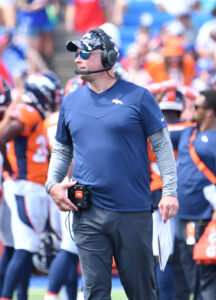 [RELATED: Jets Hire Nathaniel Hackett As OC]
[RELATED: Jets Hire Nathaniel Hackett As OC]
Besides quality control roles with the Buccaneers and Bills, Hackett mostly cut his teeth in collegiate football, culminating in him becoming Syracuse’s offensive coordinator. It was there that Hackett developed a strong relationship with Syracuse head coach Doug Marrone.
When Marrone was hired as the Bills’ head coach, he brought along Hackett to serve as his offensive coordinator. During his time in Buffalo, Hackett proved that he was able to run a competent running offense. However, thanks in part to the limitations of quarterbacks EJ Manuel, Thad Lewis, and Jeff Tuel, the passing offense struggled. Kyle Orton made the unit more respectable during the 2014 campaign, but it wasn’t enough to prevent changes in Buffalo.
Marrone decided to head to the Jaguars as their assistant head coach for the 2015 season. This left Buffalo’s staff without a secure gig moving forward, but it sounded like Hackett was going to land on his feet relatively quickly. The coach emerged as a favorite for the Rams offensive coordinator gig; this was partly due to his pedigree but was also due to St. Louis missing out on some of their top targets.
However, instead of taking the Rams job, Hackett surprised many when he revealed on January 28, 2015 that he’d be heading to Jacksonville with Marrone. Hackett was named the Jaguars quarterbacks coach, a role he held for a year-plus. Marrone found himself as interim head coach following the firing of Gus Bradley in 2016, and Hackett was promoted to OC when Greg Olson also earned his walking papers. During Hackett’s first full season as offensive coordinator in 2017, the Jaguars offense surprisingly emerged as one of the top units in the NFL with quarterback Blake Bortles and running back Leonard Fournette leading the way. That offense regressed in 2018, and Marrone surprised many when he fired Hackett following a 3-8 start to the year.
Hackett once again landed on his feet. The following offseason, he was hired as offensive coordinator in Green Bay. The Packers were the best offense in 2020, and quarterback Aaron Rodgers won back-to-back MVPs with Hackett at the helm. Thanks to his performance, Hackett finally got his chance to become a head coach when he was hired by the Broncos last offseason.
We all know how that went. The Broncos were perhaps the biggest disappointment of the 2022 season, and Hackett was canned before he was able to complete his first season as head coach. While the coach clearly lost some of his shine during the 2022 campaign, it didn’t stop him from finding a new gig. Earlier this week, the Jets announced that they hired Hackett as their new offensive coordinator.
Hackett truly made a name for himself when he took a surprising Jaguars offense to the AFC Championship in 2017. Had Hackett instead decided to take the St. Louis job (vs. taking the Jacksonville gig on this date in 2015), his career could look a whole lot different than it does today.
